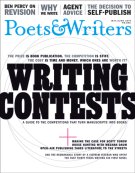From the first page of Matterhorn, Marlantes plunges readers into a forbidding jungle full of lively, confused, and terrified young soldiers trying to find their way—and themselves—under incredibly harrowing conditions. As we follow them on their journey away from and back to the hilltop fire-support base from which the book takes its name, their story is anchored by achingly specific details that are clearly drawn from the author's firsthand knowledge: a breakfast of "ham and lima beans mixed with grape jelly," jungle air so humid that "normal envelopes would stick together before anyone could use them," leeches determined enough to crawl up into a soldier's urethra. "Things in the book aren't exactly things that I experienced, but there's no doubt that those characters are seeing things that I saw and experiencing things I did experience," he says. All the while, the characters grapple with the dilemma Marlantes has carefully laid out for them: How do you learn compassion in the middle of a war?
Marlantes started seriously writing the first draft of the novel in 1975, and worked on it for about a year and a half. In 1977, when he began to reach out to agents and publishers, his subject made the book far from an easy sell. "Back then it was like, ‘Oh God, Vietnam. No one's interested in this. Please, we want to forget about it,'" he recalls. "The war was so unpopular, they didn't want to touch it." He estimates that he sent out about twenty-five queries, which were all rejected—no one even requested that he send the manuscript for them to read. Discouraged, he put it away.
For most of the seventies, living in Portland, Oregon, Marlantes worked as a lumber salesman to support his growing family—he had gotten married in 1972, and he and his wife went on to have four children (the couple later divorced; he has one child from his second marriage). In 1978, he shifted his focus and began working for an energy-consulting firm. Building on that experience, he started his own business in 1980 to provide consulting services for coal, oil, and gas companies. But his book project was never far from his mind, and the real advantage of working for himself was that it gave him more time to write. "I would pick away at it in between consulting assignments or at night," he says, trying to improve the manuscript and cut it down, since some of the more practical feedback he'd gotten was that, at about 1,200 pages, it was far too long.
In the mid-1980s, Marlantes started thinking more strategically about selling his book, devouring articles and handbooks with titles like "How to Write the Killer Query Letter That Can't Be Refused!" Having regrouped, he was ready to send out another round of queries. But nearly ten years after his first attempts, agents and editors were still almost uniformly indifferent. "If anyone answered, it was always like, ‘Oh yeah, Vietnam. Hollywood's already done it: Full Metal Jacket, Platoon,'" Marlantes says. Adding to his frustration was the fact that it was never his writing that was being rejected—no agent ever even wanted to see it—but the idea behind it. After having received about fifteen rejections, he felt too defeated to keep at it. Over the next ten years, Marlantes regularly revisited his manuscript, but discouragement kept him from sending it out again until the mid-1990s. This time, responses to his queries ran along the lines of, "It sounds interesting, but could you set it in the Gulf War and maybe cut it in half?" Again, fifteen rejections proved to be the magic number that sent him back to the drawing board.









